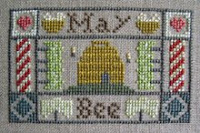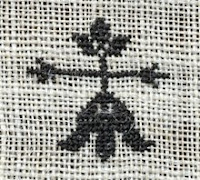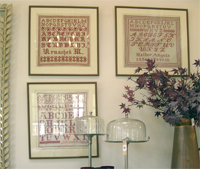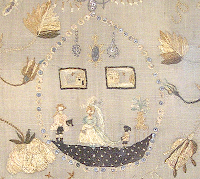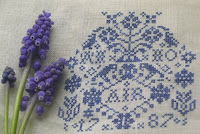
A facsimile copy of Thomas Trevelyon's Great Book exists as a two volume cased set. It costs an arm and a leg and weighs rather more. It is a wonderful source book for Jacobean costume and designs, and was referred to by Dorothy Bromiley Phelan in The Goodhart Samplers. If you were thinking of buying a copy, you might like to know that about a fifth or a sixth of the book constitutes what we would term patterns, the remainder of the images relate to saints, kings and queens, and books of days. It is fabulous but such a shame that the price of this book has been pitched so very high as to make it virtually inaccessible to people who could really benefit from the contents. I know museums everywhere need income, but this price seems self-defeating. There must be a reason: perhaps someone can explain.

